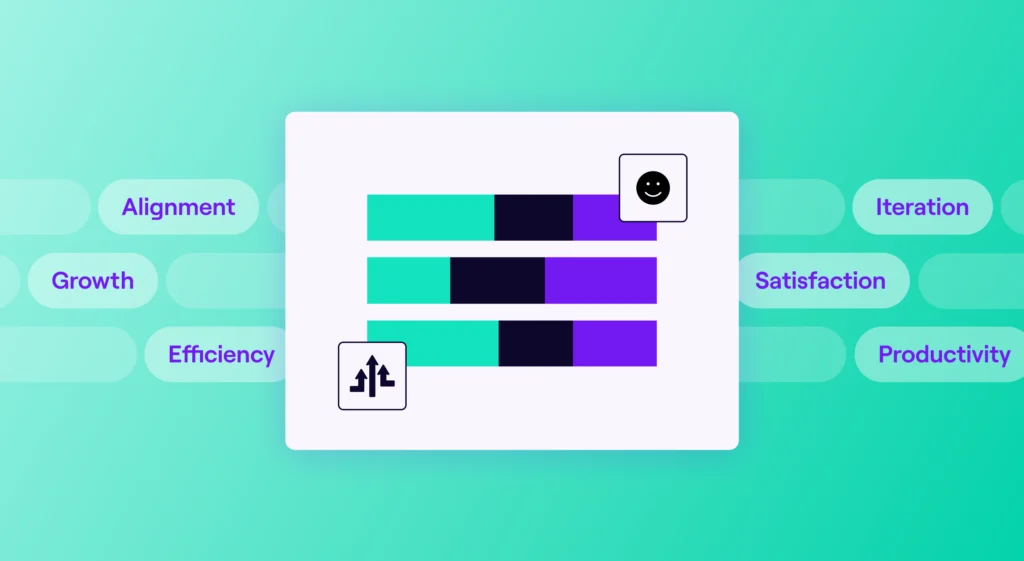Editor’s Note: This article first appeared in The Current, Jellyfish’s LinkedIn newsletter. You can subscribe for monthly updates and articles like this one here.
When people are measured in a specific area, they will always find ways to adapt and improve. But the methods they use to get there can sometimes be problematic.
When I graduated college, I worked in a call center. We were told by management that we needed to reduce our “Not Ready” time — the periods when we weren’t available to take calls because we were away from our desk or handling other work. Within a couple of weeks, our “Not Ready” time decreased dramatically.
Had we all suddenly become more focused and more efficient? Were we now more dedicated to the mission of the call center?
Of course not.
When I had to walk away from my desk, I would ask a colleague to keep an eye on things. If the phone started ringing, they would switch the system to “Not Ready”; otherwise, we let it continue running to avoid racking up a negative metric. We improved the metric that management prioritized, but we didn’t improve our actual performance.
For engineering organizations, leading with metrics can result in the same problems. To truly boost performance, and to establish an environment in which individual metrics can be reliably improved — and not just managed – engineering leaders should focus first on team health.
Here’s why.
The problem with a metrics-driven culture
When an organization leads with metrics, it can create a culture of fear and uncertainty.
“If I’m in the bottom 10% on this metric, am I going to lose my job? Will I be passed over for promotion?”
That fear motivates employees to improve their numbers by any means necessary — even if it leads to unintended consequences.
For engineers, the most common example is when leaders push teams to increase velocity. Engineers might work faster and push more code, but if focus is only on velocity, that increase in speed will almost always happen in concert with a decrease in quality. The team is moving faster, but it’s also introducing more problems into the code base. Instead, it would be better for the organization to move more slowly if the result is a product with fewer bugs.
That high-pressure culture has a detrimental effect on team health, with employees feeling overworked and underappreciated. That negative environment becomes self-reinforcing: every new goal is met with frustration by the team, and the situation gets worse and worse.
Leading with team health
Let’s be clear up front: team health doesn’t mean that everyone on the team is happy. An engineering leader can never be fully responsible for what’s happening in the lives of their team members. But an engineering leader is responsible for the health of the team — how they communicate and collaborate, how their workloads are managed, and whether or not they feel valued.
So what does team health mean in practice?
- Engineers feel like they’re doing meaningful work: If your work didn’t matter, would you be motivated to do a good job? If you had to do the same repetitive task eight hours a day, five days a week, would you still be interested at 4 p.m. on a Friday? When engineers know that their work is meaningful — that it helps the organization reach its goals — they feel a sense of motivation and satisfaction that adds up to a more positive atmosphere overall.
- Engineers aren’t overwhelmed with unplanned work: You know the feeling when you’ve just finished doing the dishes and one of your family members comes over and sets down a dirty plate for you to clean? That’s how an engineering team feels when unplanned work gets piled on top of their current sprint. Nothing feels more satisfying than setting a goal and achieving it — but when the finish line keeps moving farther and farther away, that sense of accomplishment turns into bitterness.
- Engineers have the tools and support they need to succeed: Even the most optimistic team member will grow jaded if they aren’t being given what they need to do their work. Unreliable testing environments, inadequate tooling, slow PR cycle times — these issues can cause an engineering team to feel unsupported in their work, making it difficult to collaborate and achieve the organization’s goals.
An engineering leader can choose to improve release velocity or code quality. But if they have poor team health, they won’t write faster or cleaner code. On the other hand, a healthy team can quickly and easily zero in on specific challenges and work together to solve them.
Measuring team health
What can an engineering leader do to foster a healthy work environment? The right solution will bring together quantitative engineering metrics with qualitative feedback from individual contributors.
An engineering management platform, like Jellyfish, helps engineering managers see how engineers are allocating their effort during sprints. If they’re consistently seeing 15–20% of their sprint efforts go towards unplanned work, they should understand where and why this work originates, and make corrections to stay focused on the stated goals of each sprint. Likewise, teams will fall short of goals if the planned work requires 120% capacity. They should instead plan for 80–90% capacity in their sprints, leaving room to tackle the work that comes up along the way/pick up additional work from a (healthy) backlog.
In addition to quantitative metrics, engineering managers should gather qualitative feedback from their teams using developer experience surveys. DevEx tools allow engineers to anonymously raise issues they have with their work environment — from improvements they’d like to see to the testing environment or documentation to frustrations with how work is being planned and prioritized. When engineering leaders take that feedback on board and work to address it, it shows the individual contributors that their voices are being heard.
Data and metrics are fundamental to the success of any engineering organization — but metrics themselves can’t drive progress without a healthy team. A healthy work environment should be a minimum for engineering leaders across the board. Improve team health first and performance will follow.







